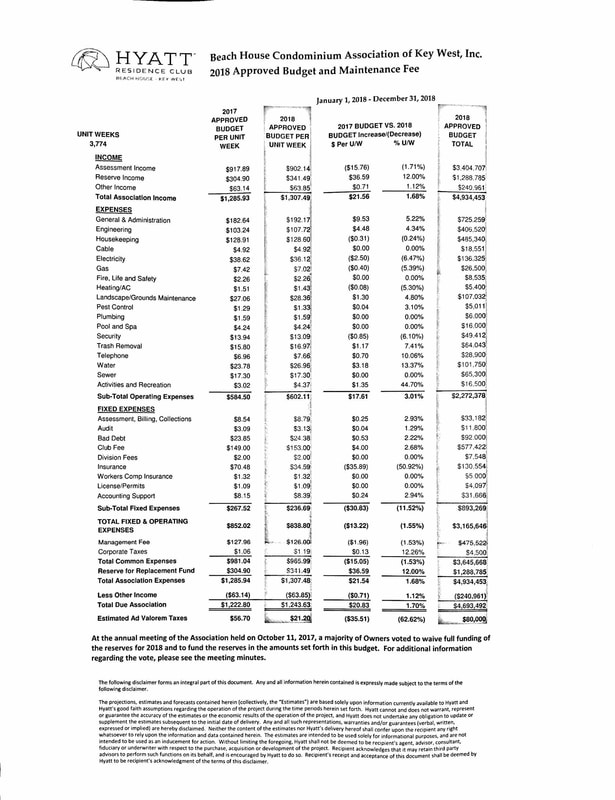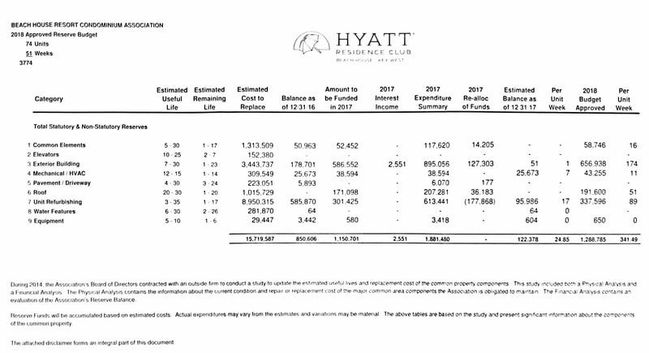|
Timeshare maintenance fees are one of the most unenjoyable aspects of owning a timeshare. These fees generally increase year over year. To most people, these fees may make timeshare ownership either unaffordable or undesirable.
While I do not like paying maintenance fees, I am able to maximize my timeshare week to get multiple weeks of vacation using just one timeshare. Therefore, even though I pay about $1250 in maintenance fees, I am able to get about 4 weeks of vacation and with exchange fees, pay about $400-$500 per week which makes it not only affordable, but a deal and many times, an absolute steal! As with many things, if you understand what goes into the maintenance fees, you may have a better understanding of why they charge you what they charge you. In my previous post, I showed you what one of my Hyatt Residence Club weeks maintenance fee bills look like. In addition to that bill, I received a few more details on what expenses are included in the maintenance fee. In the following, I have uploaded a copy of the 2018 budget for the Hyatt Beach Club resort in Key West, Florida. This has all the details on the expenses likely to be incurred by resort in 2018, broken down on a per unit / per week basis. 2018 Budget and Maintenance Fee for Hyatt Residence Club:
I will not go through all the line items but it is interesting to see the actual categories and expenses of the resort and how it is broken down per unit.
For the Hyatt Residence Club Beach House, the maintenance fees have increased about 1.7% from last year. Considering inflation is about 2.5%, a 1.7% increase does not appear too unreasonable especially considering the various items that goes into these calculations. Reserves: As I explained in my previous post, the Hyatt Residence Club has reserve category for unanticipated expenses or those expenses that cost a lot of money that need to be replaced every so often. In the chart below, the major capital expenditures are listed that includes the estimated useful life of the various components of the resort as well as the amount currently funded.
As you can see from the above chart, the Hyatt Residence Club Beach House has a certain amount of large items that will eventually need replacing.
Instead of waiting for these items to break down or fail to collect funds, they collect funds annually and keep them in reserve so that they may be replaced without having to do a special assessment or drastically increase maintenance fees during one year. Conclusion: Paying maintenance fees for your timeshare is not very enjoyable but it is necessary to maintain the resorts and keep people wanting to come back year after year. Depending on how you use your timeshare, paying maintenance fees does not have to be painful especially if you understand the fees and are able to maximize your usage. I personally think of my maintenance fees as a prepayment for my vacations. While I do not like paying maintenance fees, it does make me feel better to fully understand how the resort compiled the maintenance fees each year and to make sure that there are not unreasonable items included in these figures. Are the details helpful to you? Does disclosing the details help you better understand timeshare ownership? Make sure to comment below! |
Archives
April 2020
Categories
All
Archives
April 2020
|



 RSS Feed
RSS Feed
